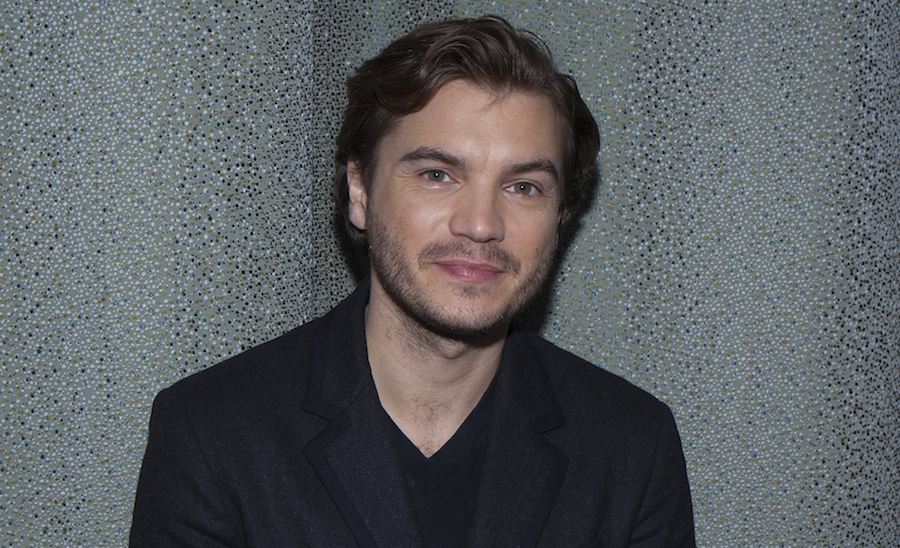Not everyone was happy Emile Hirsch was making “The Autopsy of Jane Doe.” It’s a horror movie, a genre not everyone respects. The actor remembers meeting with an acting teacher friend in Los Angeles. He showed her the script for the film, which involves two medical examiners (eventually played by Hirsch and Brian Cox) who find strange and terrifying things when working on the mysterious corpse of a young woman (Olwen Kelly). “She was just disgusted,” Hirsch recalls. “She said ‘Why are you doing this?’ I said, ‘You don’t get why this is so awesome?’ It just grossed her out. She didn’t understand the genre. Either you get it or you don’t. You like the adrenaline rush, or you’re the wuss who don’t like horror movies because you get nightmares. As if you aren’t supposed to get nightmares when you watch horror movies.” Thing is, “The Autopsy of Jane Doe” isn’t your standard gore-a-thon, the presence of a medical dissection or no. At times it’s closer to a play, and one starring two acclaimed actors. Hirsch and Cox spend most of the movie in their medical bunker, doting over their latest corpse. As they keep discovering strange and freaky surprises — such as random objects stuffed deep in her insides — things take a turn for the supernatural. But it’s still based around performances, ideas and expert filmmaking. RELATED: Interview: Elle Fanning on “Live by Night” and being scared of public speaking “It was so well-researched, so mature in its understanding of psychology and relationships,” says its director, Andre Ovredall, last seen with the Norwegian found footage fave “Trollhunter” (about giant trolls). “Its relationships were done in a very realistic manner, which isn’t always done in genre films like this. Sometimes they’re heightened for reasons of satisfying the genre elements. Here, it was the other way.” For Hirsch, “Jane Doe” was also a chance to do horror — his first. (The closest he’d come was the 2011 apocalyptic sci-fi thriller “The Darkest Hour.”) It’s a genre he’s been drawn to since he was probably far too young to be viewing them. “I made the mistake of watching ‘Silver Bullet’ when I was six years old,” Hirsch says, referring to the 1985 Stephen King movie with Gary Busey and Corey Haim. “I was with this older kid at my mom’s friend’s house. This 12-year-old, this brat, is like, ‘Watch this!’ Dude, that movie scarred me for a decade.” Hirsch is a touch worried the era of kids watching gory horror movies is no more. After all, over-protective parents will go out of their way to make sure they don’t see them.
“There’s this new hipster bulls—t thing, where they say, ‘I don’t watch horror movies,’” he says. “It’s this new helicopter parent generation of kids who don’t watch horror movies because they’re scared.” Ovredall’s own youthful experiences with horror are a bit different. In Norway, many dark and violent and disturbing films were banned.
“‘The Evil Dead’ wasn’t legal,” Ovredall recalls. “I had to get this VHS copy from someone. It was so crappy. Those kinds of movies, like ‘From Beyond,’ were amazing, influential films for me. ‘The Omen’ was another one. I find that ‘Jane Doe” is like a micro version of ‘The Omen.’ The deeper you dig, the scarier it gets, the bigger the world gets.” “Jane Doe” is a huge gear-shift for the filmmaker. It’s a film with a very precise visual language, that finds crafty and subtle ways to keep a movie largely set in a series of rooms from looking redundant. “It was an intriguing challenge to have — to constantly keep reinvigorating the movie, visually,” Ovredall tells us. “In the beginning of the film, it has to feel like a very comfortable space. You have to see how they physically relate to the space, how they own the space. As it becomes more and more scary and frightening to be there, it becomes a hostile environment. We were deliberately changing the look. We had these lenses we used in the first half, then we changed to a different set in the second — just to change the feeling of the rooms. “I’m a firm believer in the specificity of how the camera is used,” he adds. “I don’t want to use the camera randomly; every shot has to have a specific meaning. You only cut when you have a reason to. I hate cutting just to keep pace.” “Trollhunter,” by contrast, was all expertly faked found footage. “It was all improvised,” Ovredall recalls. “It was all, how can we not make this look too controlled.”
Emile Hirsch worries hipsters don’t watch horror movies anymore

Getty Images
Follow Matt Prigge on Twitter @mattprigge


















